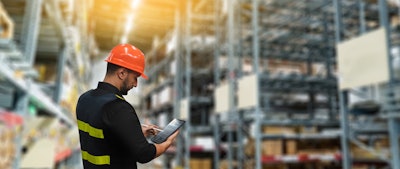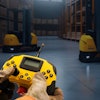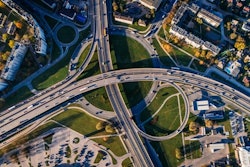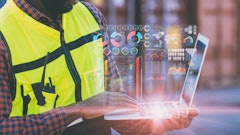
Humans have been using maps for thousands of years to navigate the world and understand the orientation of places in relation to one another. A traditional map is a familiar, ubiquitous tool. But this flat, 2D representation of a space, often printed on a large, unwieldy piece of paper has limited space for details and focuses on practical functionality only. 2D indoor maps help people navigate large indoor spaces like arenas, museums and shopping malls. Still, static images often make it difficult to interpret objects’ and areas’ spatial relationships.
However, recent technological advancements have ushered in a new era of indoor mapping: 3D maps. The design of these true-to-life maps enhances users’ experiences through details that bring the map to life, increasing engagement and adoption rates as a result. In fact, Gartner has identified 3D maps as one of the emerging technologies and trends in the indoor mapping space, citing their accuracy and immersive user experiences as burgeoning benefits.
These benefits further bolster the already booming indoor navigation market, currently valued at almost $9 billion and expected to skyrocket to $24 billion by the end of 2027. As the industry rapidly evolves, leaders must understand the full extent of what this technology can bring to their business. 3D maps elevate user experiences and benefit organizations of all sizes.
Enhanced navigation and wayfinding
2D maps allow you to plot your path from Point A to Point B but not much else. They lack perspective and depth and aren’t particularly engaging. 3D maps, on the other hand, provide a much more intuitive navigation experience with highly detailed visualizations of the space you navigate and give you:
- Better situational awareness.
- Improved spatial orientation.
- A clearer understanding of objects’ and areas’ heights, sizes and distances.
This level of detail enhances the overall wayfinding experience and reduces the potential for navigational errors.
Improved user experience in large indoor spaces
Realistic 3D maps provide a more immersive, engaging experience than 2D maps. Accessed via smartphone or other connected device, a 3D map can improve user experiences in shopping malls, airports and other large indoor spaces because of its level of detail and ease of use. Vector graphics enhance the map's realism and allow you to zoom, tilt and rotate through it smoothly, making exploring and interacting with it more enjoyable. Users can easily find amenities, services and points of interest and use the advanced wayfinding tech to navigate to their desired location.
3D maps also can seamlessly integrate with existing technologies, such as location-based services that offer personalized recommendations. Many use cases exist for 3D indoor maps, including:
- Airports. You can browse shops and find restaurants, restrooms and lounges. As you move through the airport, the map provides updated information in real-time about how long it will take you to get to your gate based on your current location, enabling you to budget your time and make your flight.
- Shopping centers. Finding a specific store in an expansive mall becomes a simple task with step-by-step navigation. The map can also serve you personalized advertisements based on your location so you can take full advantage of special offers.
- Stadiums. 3D maps remove the stress of attending a big event. You can find and book parking spaces ahead of time, upgrade your tickets in-app and buy concessions from your seat you found without consulting an usher because you used the map’s real-time, turn-by-turn wayfinding abilities.
3D indoor maps make navigating large indoor spaces and accessing amenities and services easy. Their design combines functionality with visual appeal to delight users and facilitate the use of the technology — and improve user experiences.
Increased safety and emergency response
When you think of a 3D indoor map, you may not immediately think of safety as a benefit, but precise location technology can aid first responders in navigating large, complex buildings. The map can provide real-time information about the location and status of people in the building so emergency personnel can efficiently coordinate their efforts.
Further, the map can quickly and easily guide building occupants to the closest exits or safe areas, leading to faster, more efficient evacuations. The map will also identify the location of emergency equipment like fire extinguishers or AEDs for quick, easy access.
Accessibility and inclusion
While many types of disabilities exist and a one-size-fits-all solution rarely fits all, 3D indoor maps can also help people with several common accessibility and neurodiversity concerns. People with visual or hearing impairments can access the map on their personal devices to more easily navigate without relying on others. Individuals with limited mobility can also use the map to locate ramps, elevators and fully-accessible paths.
Indoor mapping takes into account many sensory considerations for neurodiverse individuals (estimated to be 15-20% of the population) so they can plan routes in advance to avoid noisy or crowded areas. 3D indoor maps foster independence and inclusivity by improving accessibility.
As the indoor navigation space progresses and 3D map adoption proliferates, forward-looking organizations will take advantage of this cutting-edge technology. Toss out your paper maps and implement a 3D indoor mapping solution to improve user experiences, safety and accessibility.



















